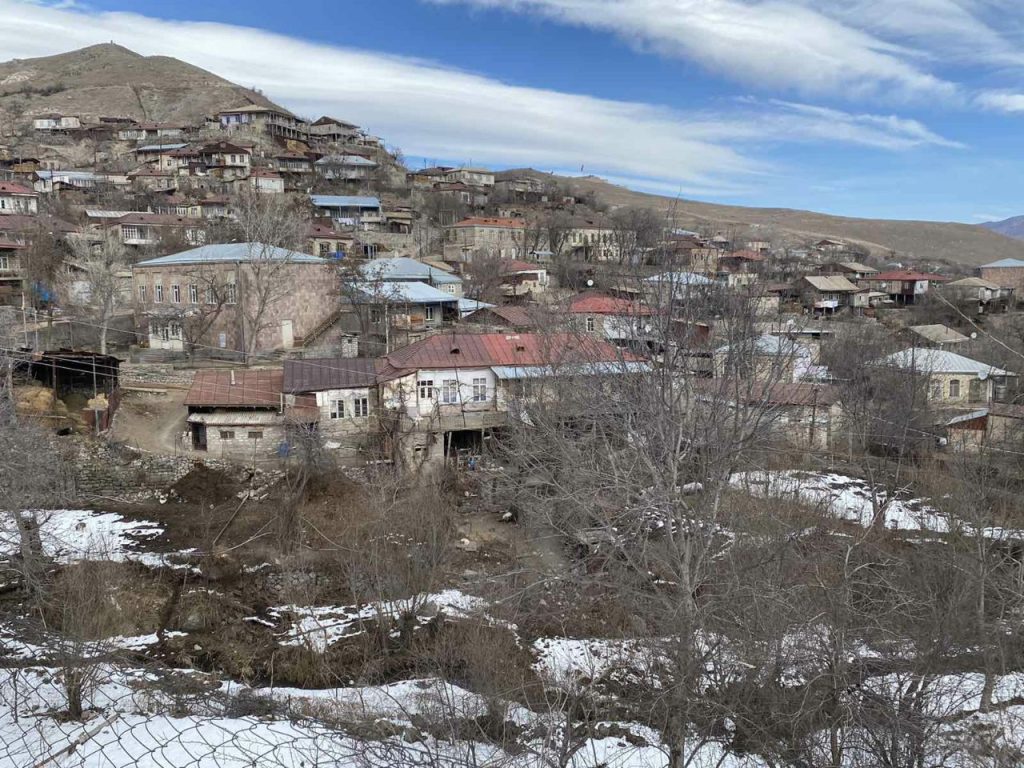Refugees from Nagorno-Karabakh share stories about their life in Armenian villages
IDPs from Karabakh in Armenia
As a result of the 44-day war in 2020, thousands of people lost their homes in Nagorno-Karabakh. According to official data, as of January 1 this year, 5,400 families of internally displaced persons (21,000 people in total) live in Armenia. Most settled in the regions.
- Enclaves – islands of Armenian-Azerbaijani confrontation
- Every life matters: how people and animals save each other
- Housing problem in Armenia: who is unable to rent a home in Yerevan and why?
“The youngest daughter was born after we moved”
Seven of the eight children of Narine and Vahan Kostanyanov were born in the village of Gak, Kashatagh region of Nagorno-Karabakh. The youngest daughter Lilith the family moved to Armenia, to the city of Goris.
“I was pregnant when we left our home. We left at the end of November [hostilities ended on November 10, 2020, according to a trilateral document signed by the heads of Armenia, Azerbaijan and Russia, the residents of this area were given time to leave their homes – until December 1 – JAMnews].
“Lilith was born a few days after we moved – on December 8th. We only managed to live only a few months in our new house in Gak. Because we were a large family, it was provided to us by the state. Who knew it would turn out like this?”, says 30-year-old Narine Kostanyan.
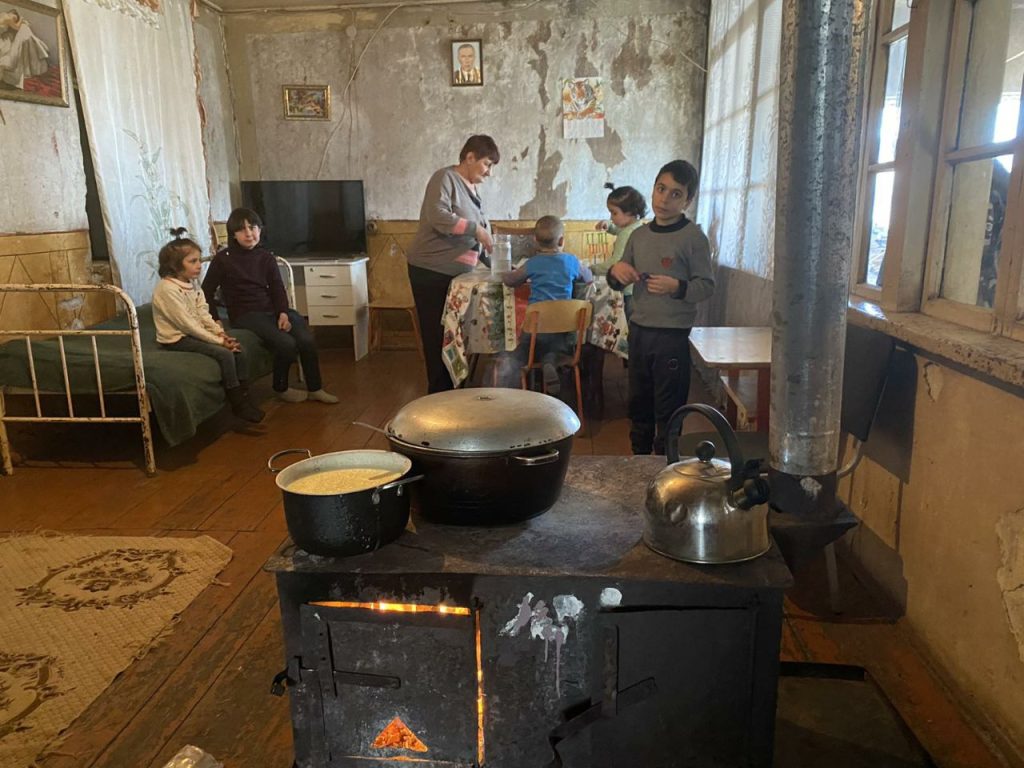
The children gather at the only dining table in the house. The eldest is 14 years old, the youngest is a year and two months old. In the corner of the room is a wood-burning stove filled with boiling pots. They all got used to the big, but, as Narine says, very uncomfortable house – they could not hope for other housing.
The whole family yearns for their village, the new home they had to leave and their garden.
Narine’s husband says that they managed to take out animals, clothes and firewood from Gak. From the very beginning, they decided to move to Ishkhanasar, a village in the Syunik region, in the south of Armenia. Mount Ishkhanasar rises in front of it, behind which is their village Gak and their lost house.
“Here we are closer to our village, to our home. If the housing issue is resolved in Ishkhanasar, the state will be able to provide us with a roof over our heads, and we will stay here”, says Vahan Kostanyan.
The administration of Ishkhanasar has provided the family with temporary housing. Some public organizations periodically come to visit them and bring help – food, firewood, clothes.
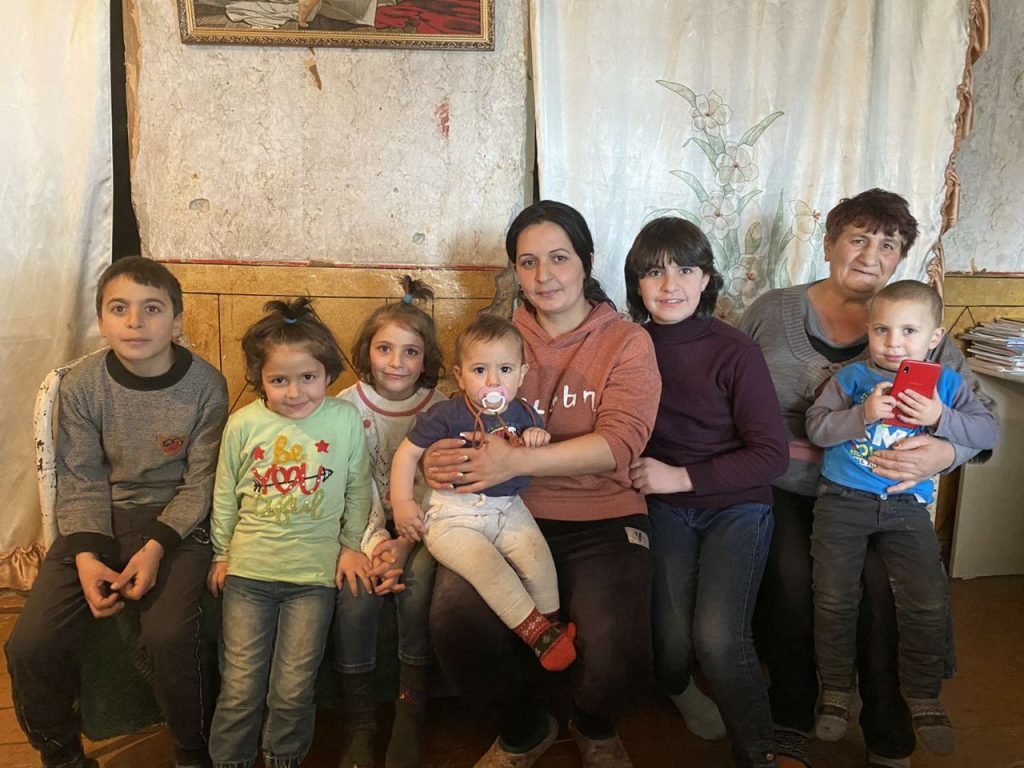
In the same village, in addition to the Kostanyan family, 4 more families now live, who lost their homes in Nagorno-Karabakh, in total – 29 people.
“My husband said that he would not survive what happened to us”
The Buniatyan family settled in the village of Khnatsakh, Syunik region. They moved to Armenia from the village of Melikashen in the Kashatagh region.
“We were given two days to pack. I only managed to pack up clothes for my three children. We left everything there”, says 40-year-old Voskehat Buniatyan.
She says that for more than a year the whole family has been trying to adapt to a new life in a new place:
“Ever since we moved to Khnatsakh, my husband was saying that he would not survive what happened to us and die. And so it happened, two months ago he died of a stroke.
In Melikashen, Voskehat had a small livestock farm and a vegetable garden, but she has nothing in Khnatsakh. She is trying to find a job to support her family.
“The house where we live now does not have a land plot for me to grow something. If they give me a house, then I will stay here, if not, then maybe I will go back to Artsakh. We will settle in one of the villages, where the authorities provide housing. Especially since my son will be drafted in two years. I want to transfer his documents to Armenia, but he does not let me, he says, he was born in Artsakh, his land is there, and he will serve there. If he goes to serve in Karabakh, then we will definitely go back”, says Voskehat.
Khnatsakh is located 250 km from Yerevan, after the 44-day war the Armenian village again became a border with Azerbaijan. In addition to the Voskehat family, 20 families who have migrated from NK live there.
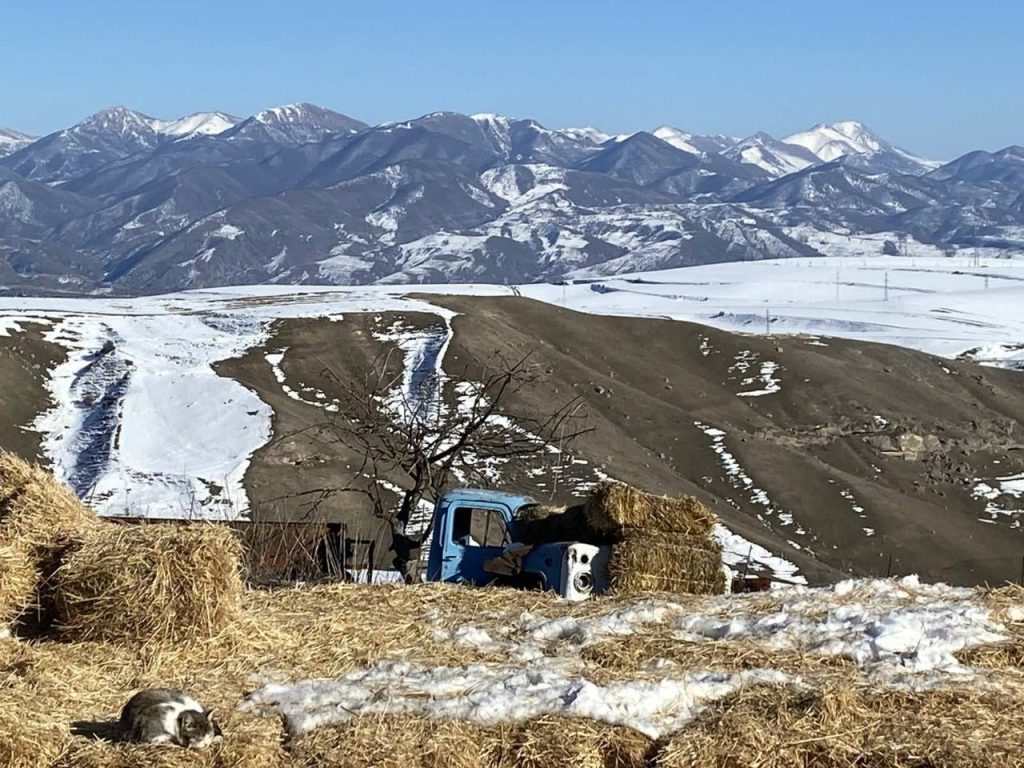
“We had to carry water home in buckets, but we were happy”
Manushak Hakobyan remembers her house in the village of Tsitsernavank in the Kashatagh region with regret and pain. Now she and her family have moved to Khnatsakh, got a job at a local school.
“We left Tsitsernavank on November 29, 2020, we stayed until the end, we left on the last day. I remember our house, the gorge, neighbors. I don’t know, maybe time will help. There was a big school in the village, I worked there for 15 years. We lived quietly, we were happy at home. We had to carry water home in buckets, but we were happy. And now we have moved, and we don’t have a house”, says Manushak.

The mother of three children says that she had to move three times in the same village in a year: either because owners sold their houses, or for some other reason:
“It is not easy to live like this. We only took the tin roof from our house in Artsakh, we had to sell our animals. Here my husband is engaged in animal husbandry, we have 4-5 cows. The trouble is that there are no pastures here. We had to sell one of the cows and buy hay to feed the rest. The pastures of Khnatsakh came under the control of Azerbaijan”.
“I don’t look in the direction where our mountains are”
The family of Artavazd Abrahamyan also moved from Tsitsernavank to Khnatsakh.
“Our village was small, and we lived like one big family, shared our joys and sorrows. Until September 27, 2020 [the day the war began]. Since that day, our lives have changed. At first, we thought that it would all end soon, like it did during the four-day war, but then the worst happened [meaning defeat in the war]. When this document [ceasefire agreement] was signed on November 9, we were all in shock.
I can say that the village immediately died out, we were physically alive, but we died on the inside. We moved here, our baby was already born here. Many of our fellow villagers have now settled in different regions of Armenia, settled down as best they could, but we are in touch with everyone. Recently there was a wedding of one of them in Hrazdan, I also went there. We still have warm relations”, says Artavazd.
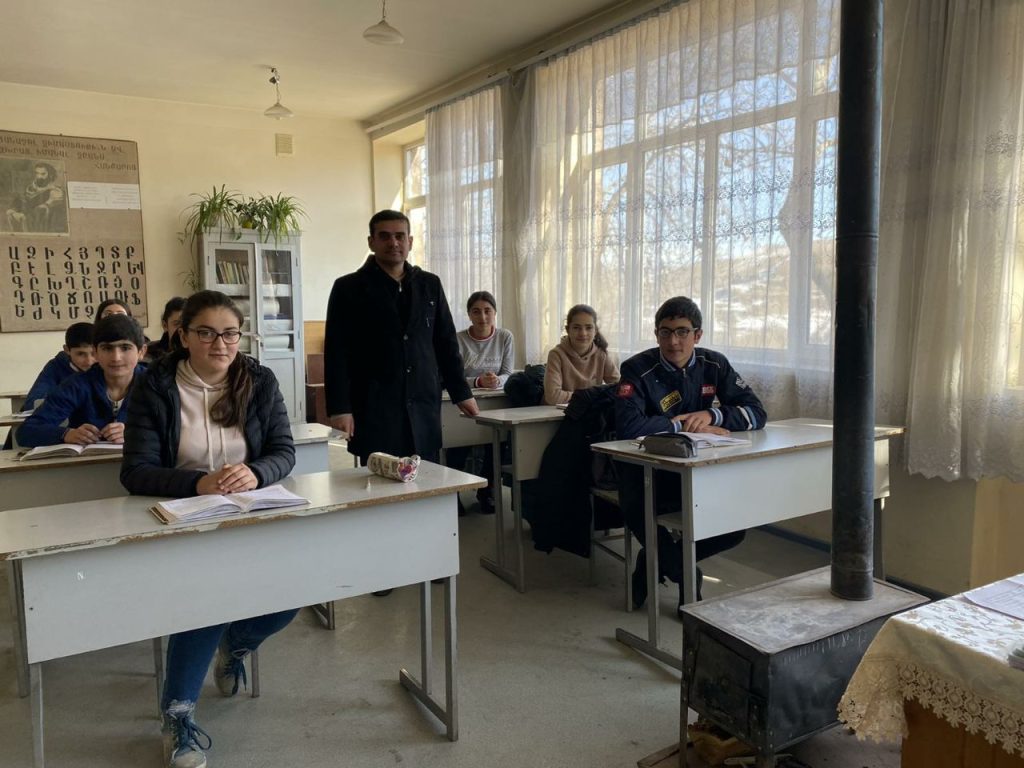
In Khnatsakh, Artavazd was appointed director of the school a few months ago.
The distance between from Khnatsakh and his village Tsitsernavank is only 5 km. “There is a road in Khnatsakh, along which I seem to have been walking for a century, because from it you can see the mountains of our village, and also the Azerbaijani flags. For us, this road is unbearable. Honestly, I don’t even look in that direction, I try not to walk along this road. It’s hard”, says Artavazd.
